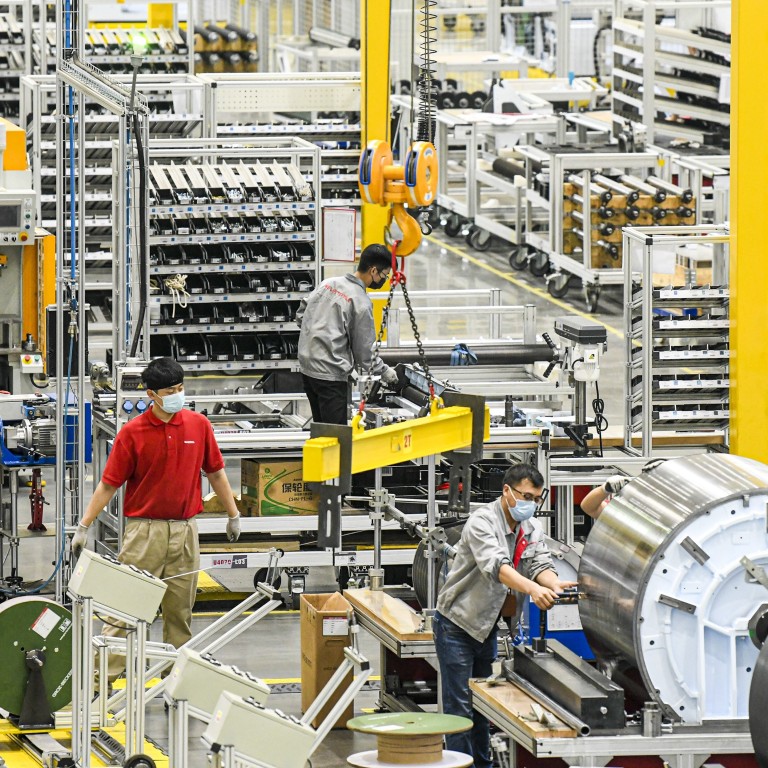
China’s economic activity extended its strong growth in November as manufacturing, services sentiment grows
- China’s official manufacturing purchasing managers’ index (PMI) was 52.1 in November, up from 51.4 in October to its highest since September 2017
- The official non-manufacturing PMI, which measures sentiment in the service and construction sectors, was 56.4 last month – the highest reading since June 2012
China’s economic activity extended its strong growth in November, according to data released on Monday.
November’s reading was higher than the median prediction of a poll of analysts conducted by Bloomberg, which expected a small rise to 51.5.
China’s non-manufacturing PMI – a gauge of sentiment in the services and construction sectors – was 56.4, above October’s reading of 56.2. Analysts had forecast 56.0.
A reading above 50.0 indicates growth in sector activity, while a reading below represents contraction.
The official manufacturing PMI reading was the highest since 52.4 in September 2017, while the non-manufacturing PMI was the highest reading since 56.7 in June 2012.
The official composite PMI was 55.7 in November compared to 55.3 in October.
The readings highlighted a continued rebound in China’s economy from the sweeping shutdowns caused by the coronavirus pandemic early in the year.
The latest official PMI surveys showed that the pace of economic growth picked up in November on the back of a broad-based improvement in both services and manufacturing
“The latest official PMI surveys showed that the pace of economic growth picked up in November on the back of a broad-based improvement in both services and manufacturing,” said Julian Evans-Pritchard, senior China economist at Capital Economics.
“Looking ahead, the recovery of household spending has been the most significant development recently. We expect it to continue as the tightening of the labour market and improving consumer sentiment lead households to run down the excess savings they accumulated this year. That should further support the rebound in services activity. It should also boost manufacturing, which will continue to benefit too from supportive fiscal policy and strong foreign demand.”

01:07
What is the purchasing managers' index (PMI)?
Within the official manufacturing PMI, the subindex for new export orders rose to 51.5 in November from 51.0 in October, while the import subindex rose to 50.9 from 50.8. The employment subindex also rose to 49.5 from 49.3.
Within the non-manufacturing PMI, the subindex for the construction sector rose to 60.5 in November, up 0.7 from October; while the service sector business activities index was up 0.2 to 55.7.
The new orders subindex dropped to 52.8 in November from 53.0, while the employment subindex dropped to 48.9 from 49.4.
“The recovery of the manufacturing sector is still uneven. The PMI for the textile and apparel industry remained below the 50 threshold and its momentum has continued to be weak,” said senior NBS statistician Zhao Qinghe.
“Overall, thanks to the coordination of targeted pandemic containment, the consumer market is gradually recovering in an orderly manner, and the service sector is being restored at a steady pace.
“The composite PMI was 55.7 in November, up 0.4 from previous month, showing that corporate production and operation activities continued to accelerate in China and the stable recovery trend was further consolidated.”

.JPG?itok=J8tgfPmW&v=1659948715)
